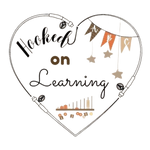
Learning Through Play with Learning Tiles – Cathie Thomas
One of the most wonderful things about play is that it provides a platform for children to learn through discovery. As children explore, discern, negotiate, take risks, imagine, ponder, and solve problems in their play, they are in fact building foundational literacy, numeracy, and scientific skills. As such, I am always on the lookout for toys and resources that encourage discovery and therefore promote learning.
Recently, we received a set of ocean-themed Learning Tiles. This resource comprised ten double-sided wooden tiles. One side of each tile has a literacy activity and the other side, a numeracy activity. Hannah was instantly excited when she opened the set and saw the tiles – drawn to the colourful images and full of questions about them. Both sides of the tiles were colourful and engaging and prompted opportunities to learn and discuss.

Three of the (many) ways we have used our Learning Tiles in our play:
- To build phonemic awareness (Literacy):
My 4-year-old daughter is still learning to recognise most letters (she knows those in her name and a few others). We have been using the literacy side of our Learning Tiles to practise associating letters with the sounds we can hear in spoken words. Each tile has two letters printed beneath a picture, providing the opportunity to practise not only letter recognition in matching a letter to the initial sound of a word represented by an image (like you might with a conventional letter flashcard), but also discernment between two possible choices. This choice added a ‘problem solving’ element to the task, which enhanced my daughter’s level of active engagement and deepened her learning as she grappled with her decision about which letter matched the image best.
This activity was accessible to her despite her not yet knowing most letter sounds, as the images were all objects/animals she recognised. The way we played was first I would point to the two letters and say, for example, “This letter (t) makes the /t/ sound and this one (c) makes the /k/ sound. Which letter matches the picture best?” She would say the word represented by the picture (turtle) and ponder which letter best matched the initial sound before using a peg to indicate her choice. I would then ask her to tell me why she chose that letter, and she would say, “because turtle starts with /t/!”
I really enjoyed the relational element of the activity as we played together while growing her literacy skills. I also like that she will be able to use the tiles independently as her phonemic awareness improves, to consolidate her letter knowledge.

- To practice one-to-one correspondence (Numeracy):
My daughter can already recognise most numerals and can subitise numbers up to 6 when arranged like the dots on a die. However, when counting larger groups of objects, or groups with objects displayed in a different configuration than on a die, she cannot rely solely on her ability to subitise and does not always remember to point to each object as she counts then, sometimes miscounting them as a result.
The numeracy side of the Learning Tiles has a group of pictures with two numbers beneath, requiring the child to count the objects and decide which numeral matches number of objects in the group. This side of the tile has been great for encouraging one-to-one correspondence, encouraging her to point to only one picture at a time and checking that the total she arrives at matches one of the numerals printed on the card. Like the literacy side, the added element of choice, brings a higher order problem solving aspect to the task, strengthening her number recognition knowledge.

- To promote curiosity, practice justifying an opinion, and growing classification skills (Scientific skills):
Some of the tiles (such as the three tiles shown below), have more than one possible correct letter choice. For instance, on the tile with the seagull, either letter could represent the initial sound of the word pictured. /b/ would be the correct choice if my daughter identified the picture as a ‘bird’ (which it is). /s/ would be the correct choice if my daughter identified the picture as a ‘seagull’ (which it also is).
We had some great discussions over these three tiles as my daughter grappled with which letter to choose. She said things like, “I don’t know which one to choose because tree starts with /t/ and palm starts with /p/.” We spoke about how both choices could be correct depending on her opinion and how she justified it. I modelled the language to use when giving a reason for her choice, saying, for example, “I think /b/ is correct because this tile has a picture of a boat and boat starts with /b/”. She then reciprocated with, “I think /s/ is correct because it is a sailing boat and sailing boat starts with /s/.
We also spoke about how sometimes one choice is more correct because it is more specific and classifies the object/animal into its type. E.g., it is a bird (so /b/ is correct), but the type of bird it is, is a seagull (so /s/ is more correct because it is more specific).
Learning Tiles promote such wonderfully, rich learning and discovery. I can’t wait to grow our collection!

Leave a comment